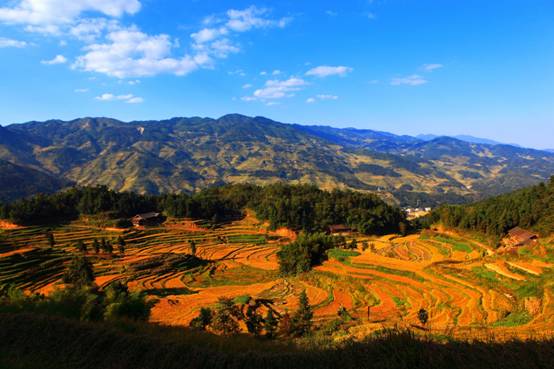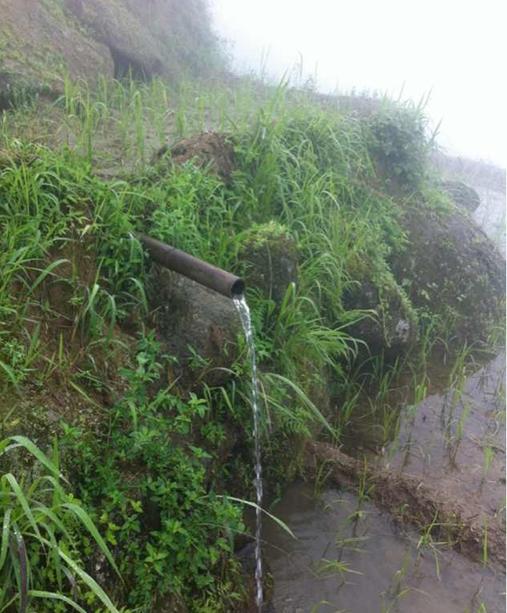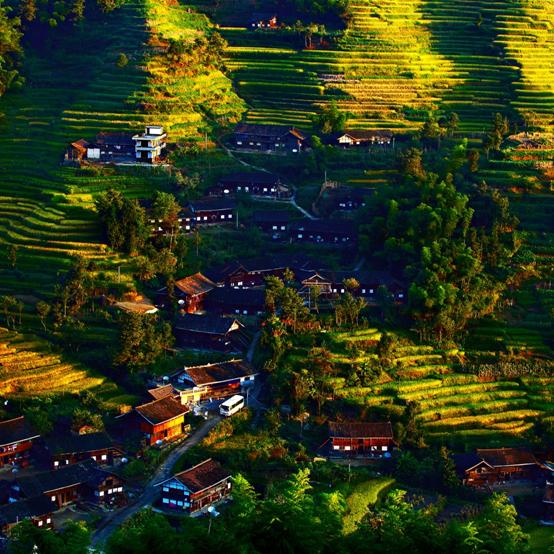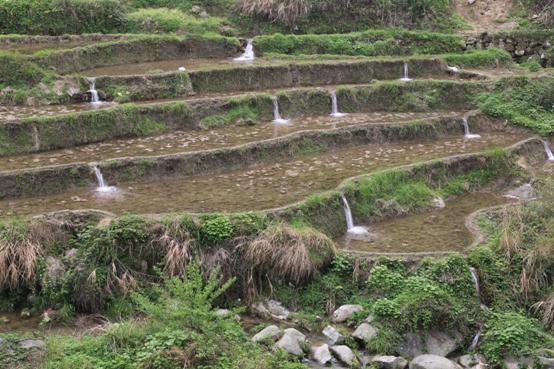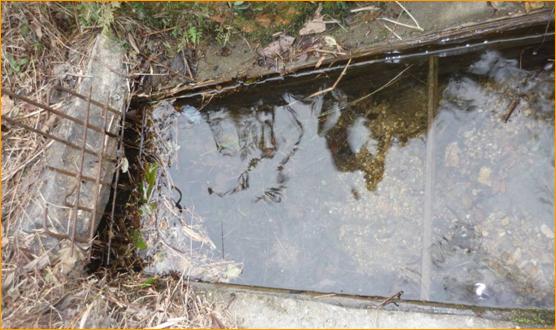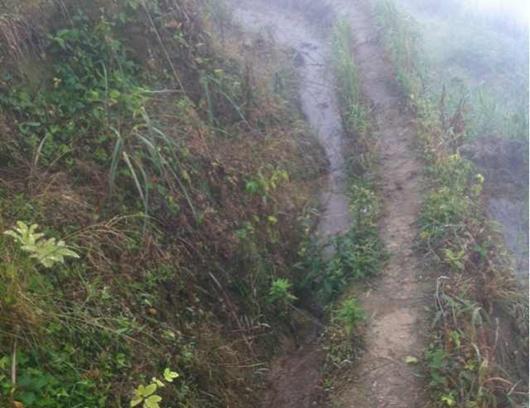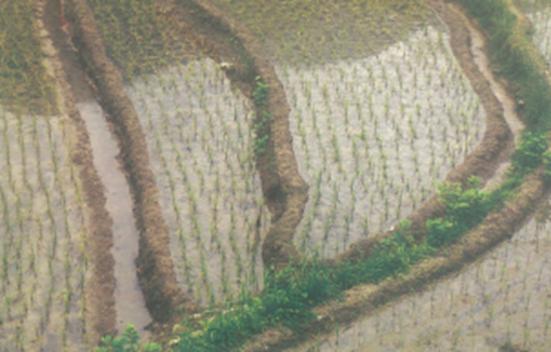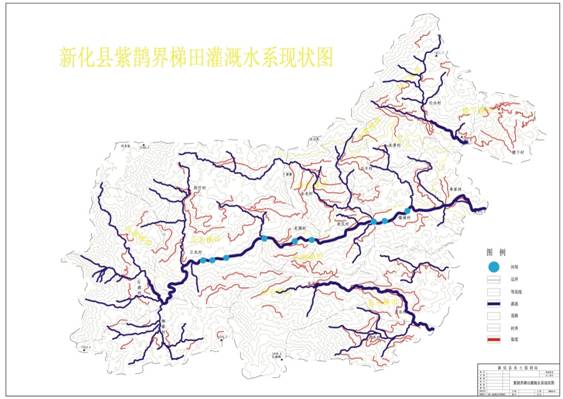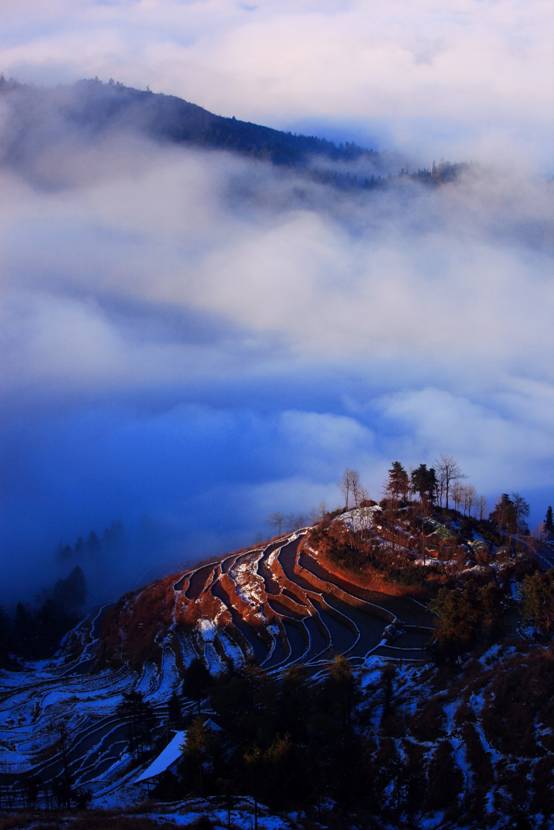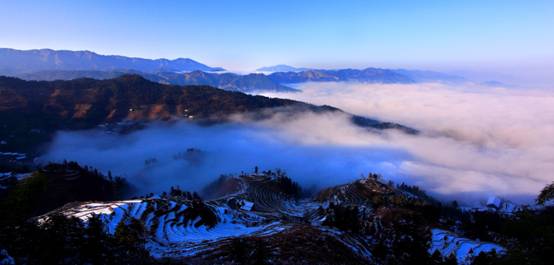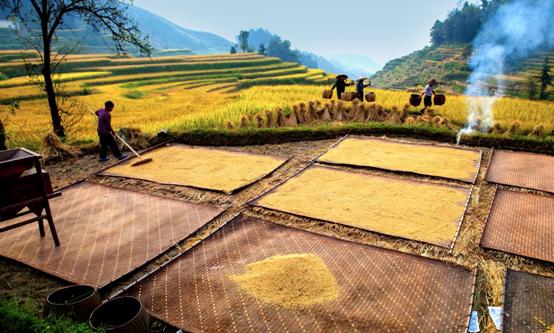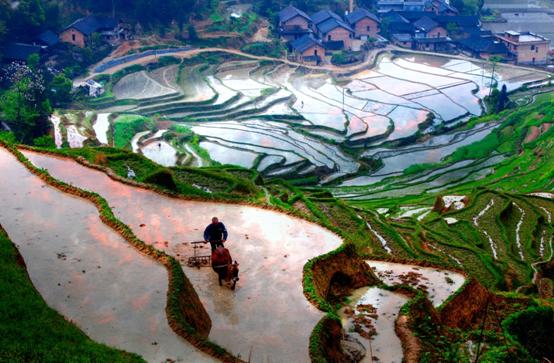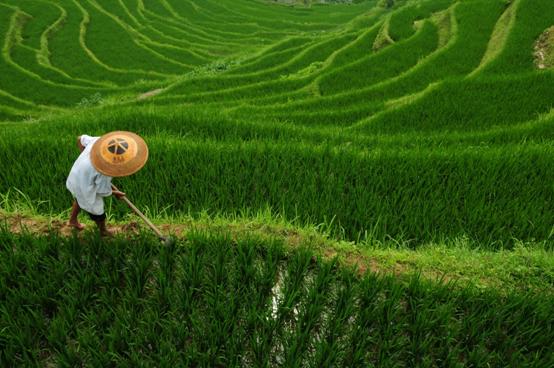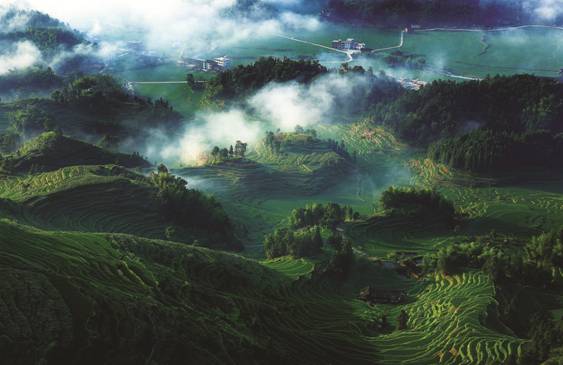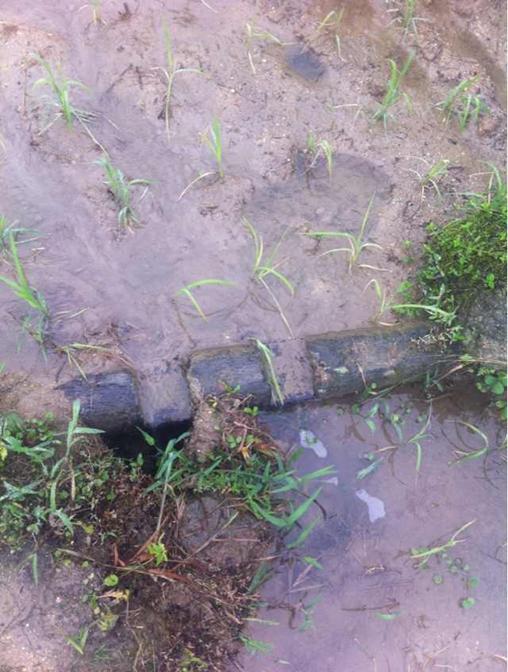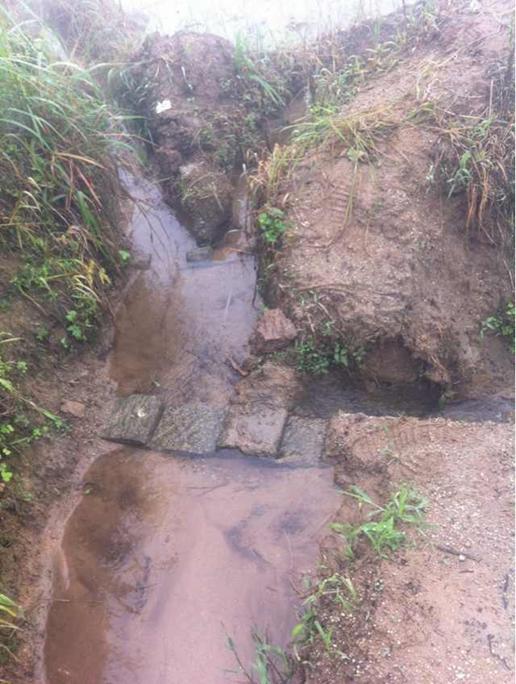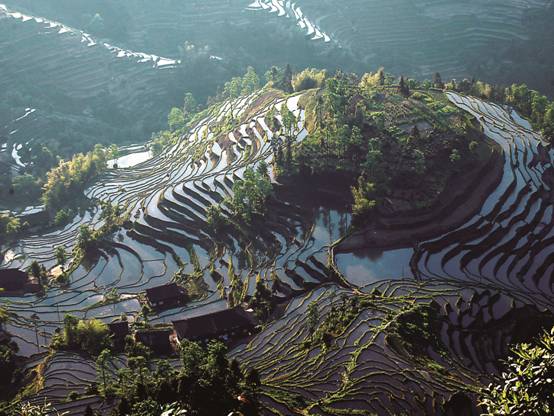Ziquejie Terraces
Profile; ?>Located in Hunan Province of South Central China Ziquejie Terraces are built on hills with altitude ranging from 460m-1540m and surface slope varying between 25o-40o. Enjoying an average annual precipitation of 1700 mm, the area is rich in water resources.The lack of plains at Ziquejie has forced the ancient people to reclaim terraces which were chiselled into shapeby the 10thcentury AD.
Covering a total area of 6416 hectares, Ziquejie Terraces are the fruit of Ziquejie people~s wisdom and hard work and an excellent example of overall planning and sustainable exploitation of water and land resources. As a full-fledged gravity irrigation project built with simple technology and natural materials, Ziquejie Terraces are perfectly adapted to local conditions and have provided local farming system with water guaranteed for more than 1000 years and serve as tool for water and soil conservation and artificial wetlands.
The irrigation and drainage system of Ziquejie Terraces is made up of three parts: water storages, irrigation and drainage canal system, and control devices. In the valleys of Ziquejie, there are many streams that do not dry up throughout the year. These streams are damned up with small weirs. In normal times, these weirs ensure diversion of water to the terraces; during torrential rains, the flood water overflows from the top of the weirs. Water inlets are located a few meters upstream of the weirs. The angle between the mouth and the stream is larger than 60o so as to ensure safety. The weirs are equipped with grit chambers and flushing sluices to reduce silting of canals. Ridges with 0.2-0.3m height convert the terrace fields in to major water retaining structures with a capacity of 10 million m3. Coupled with the abundant water retained within the soil, the water-retaining terrace fields provide adequate water supply for the terrace agriculture. For delivering water to the platform fields on independent hills, local people set up bamboo tubes as aqueducts. Bamboo tubes are also employed for trans-altitude water delivery to avoid erosion of the ridges.
Ziquejie Terraces fully utilize natural valleys and streams as the main drainage canals. Besides, drainage outlets are built in the proper place of the terrace fields and canals to ensure the discharge of water logging and tail water. Perpendicular to the contours, these valleys and streams can either be dammed up to be water sources or serve as main drainage canals.
The expansion of farmland has facilitated the development and integration of different ethnic groups. Today, Ziquejie Terraces still support more than 17000 people of 16 villages, and the traditional way of life and cultural diversity have been retained. The unique but scientific water-land development method and the simple but developed irrigation and drainage system have helped Ziquejie break the rules that hills with slope greater than 25o are not suitable for terraces.
As the result of rice farming expanding from plains to mountainous regions, Ziquejie Terraces have witnessed the spread of irrigation methods and the integration and development of ethnic groups. The local village organizations in charge of water distribution and project maintenance are still subject to unwritten village rules and conventions that have been in effect for thousands of years. According to these rules and conventions, water from canals of higher altitude irrigates terrace fields of higher altitude, while water from canals of lower altitude irrigates terrace fields of lower altitude, thereby fully employing the gravity. Thanks to local people~s careful maintenance, the 6416 hectares of Ziquejie Terraces are still in good shape and functioning well.
HIGHLIGHTS
Country: China
Province: Hunan
Latitude : N. 27 o 40 Longitude : E. 110 o 01
Built: Around 900 AD
River: Zijiang
Sub-Basin: Zijiang River sub-basin
Irrigated Area: 6416 ha
65th IEC Meeting, Gwangju, Korea, 2014
